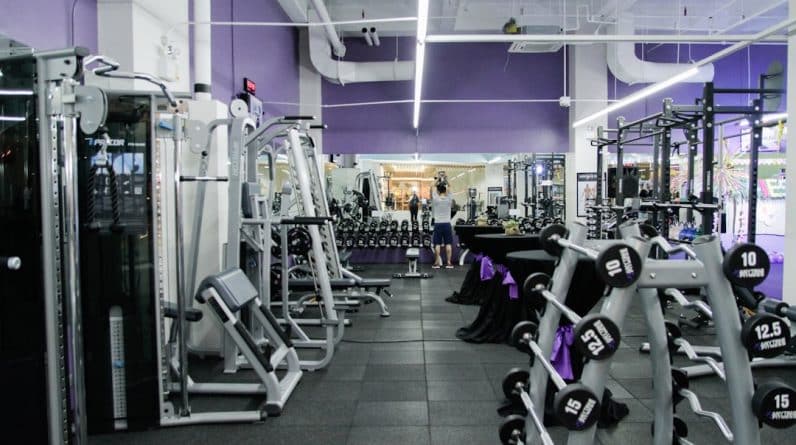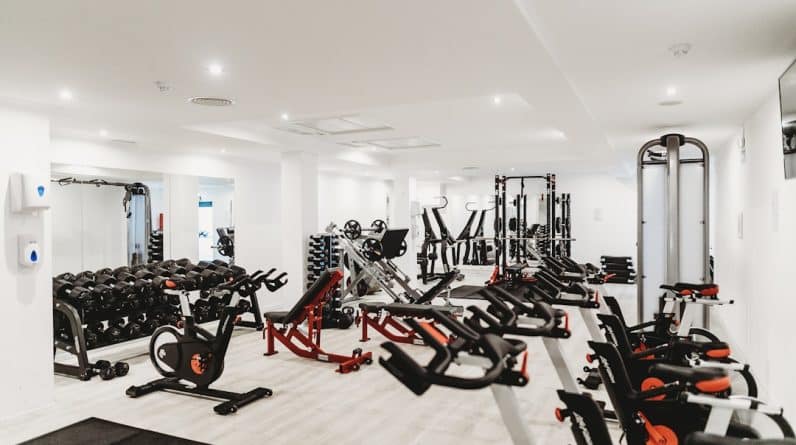
When considering the financial implications of fitness, the cost comparison between a home gym and a gym membership is often one of the first factors that come to mind. A gym membership typically involves a monthly fee, which can vary widely depending on the facility, location, and amenities offered. You might find yourself paying anywhere from $10 to over $100 per month.
Over the course of a year, this can add up significantly, especially if you opt for a premium gym with additional services like personal training or group classes. On the other hand, investing in a home gym requires an upfront cost for equipment, which can be substantial depending on what you choose to purchase. However, once you’ve made that initial investment, you won’t have to worry about recurring fees.
While the initial costs of setting up a home gym can be daunting, it’s essential to consider the long-term savings. If you plan to work out regularly for several years, the cumulative cost of a gym membership can far exceed the one-time expense of buying equipment for your home. Additionally, you have the option to gradually build your home gym over time, purchasing equipment as your budget allows.
This flexibility can make it easier to manage your finances while still committing to your fitness journey. Ultimately, when weighing the costs, you should consider not just the immediate financial impact but also how your choice aligns with your long-term fitness goals and lifestyle.
Key Takeaways
- Home gym may have a higher initial cost, but it can save money in the long run compared to a gym membership
- Home gym offers convenience and accessibility, allowing for workouts at any time without travel
- Gym membership provides a variety of equipment and classes, while home gym may have limited options
- Social interaction and motivation can be found at the gym, while home gym offers personalized space and privacy
- Maintenance and upkeep of equipment is necessary for home gym, while gym membership requires no such responsibility
One of the most significant advantages of having a home gym is the unparalleled convenience it offers. Imagine waking up in the morning and being able to step into your workout space without having to commute to a gym. You can fit in a quick workout before breakfast or squeeze in a session during your lunch break.
This level of accessibility can be a game-changer for those with busy schedules or family commitments. You no longer have to plan your day around gym hours or worry about traffic; your workout is just a few steps away. Moreover, having a home gym means you can work out whenever it suits you best.
Whether you’re an early bird or a night owl, your fitness routine can be tailored to fit your lifestyle. This flexibility can lead to more consistent workouts, as you’re less likely to skip sessions due to time constraints or inconvenient gym hours. The ease of access can also encourage you to try new workouts or experiment with different routines since you don’t have to worry about fitting into a specific class schedule or sharing equipment with others.
Variety of Equipment and Classes
When it comes to variety, both home gyms and commercial gyms have their unique offerings. A commercial gym typically boasts a wide range of equipment and classes designed to cater to various fitness levels and interests. You might find everything from weight machines and free weights to cardio machines and specialized classes like yoga or spin.
This diversity can be motivating, as it allows you to explore different types of workouts and keep your routine fresh. However, building your own home gym doesn’t mean sacrificing variety. You have the freedom to choose equipment that aligns with your personal fitness goals and preferences.
Whether you prefer strength training, cardio workouts, or flexibility exercises, you can curate a selection of equipment that suits your needs. Additionally, with the rise of online fitness platforms, you can access an array of virtual classes from the comfort of your home. This means you can participate in everything from high-intensity interval training (HIIT) to dance workouts without ever stepping foot in a gym.
The ability to customize your workout experience can lead to greater satisfaction and motivation in your fitness journey.
Social Interaction and Motivation

While working out at home has its perks, one aspect that many people miss is the social interaction found in a traditional gym setting. For some, the camaraderie of group classes or the motivation from fellow gym-goers can be incredibly inspiring. You might find that being surrounded by others who share similar fitness goals pushes you to work harder and stay committed.
The social aspect of a gym can also provide accountability; knowing that others are expecting you in class or at the gym can encourage you to show up even on days when your motivation wanes. On the flip side, working out at home allows for a different kind of social interaction. You can invite friends or family members to join you for workouts, creating a supportive environment that fosters motivation and accountability.
Additionally, many online fitness communities offer virtual support through forums or social media groups where you can share progress, challenges, and successes with others on similar journeys. While the social dynamics may differ between home gyms and commercial gyms, both options provide opportunities for connection and motivation in their own unique ways.
Personalized Space and Privacy
Creating a personalized workout space is one of the most appealing aspects of having a home gym. You have complete control over how your space looks and feels, allowing you to design an environment that inspires you. Whether you prefer bright colors, motivational quotes on the walls, or calming decor, your home gym can reflect your personality and preferences.
This level of customization can enhance your workout experience and make exercising feel more enjoyable. Privacy is another significant benefit of working out at home. For many individuals, the thought of exercising in front of others can be intimidating or uncomfortable.
A home gym provides a safe space where you can focus on your workouts without feeling self-conscious. You can experiment with new exercises, try different routines, or even dance like nobody’s watching without fear of judgment. This sense of privacy can lead to increased confidence and a more relaxed approach to fitness.
Maintenance and Upkeep
Owning a home gym comes with its own set of responsibilities regarding maintenance and upkeep. Unlike a commercial gym where staff handles cleaning and equipment maintenance, you are responsible for ensuring that your workout space remains tidy and functional. This includes regular cleaning of equipment, organizing weights, and ensuring that everything is in good working order.
While this may seem like an added chore, it also allows you to take pride in your space and ensure that it meets your standards. On the other hand, commercial gyms typically have dedicated staff who manage maintenance tasks, allowing you to focus solely on your workouts without worrying about upkeep. However, this convenience comes at a cost—your membership fees contribute to these services.
If you prefer a low-maintenance approach to fitness, a commercial gym might be more appealing. Ultimately, whether you choose a home gym or a commercial facility will depend on how much time and effort you’re willing to invest in maintaining your workout environment.
Flexibility in Workout Schedule

Flexibility is one of the most significant advantages of having a home gym. You have the freedom to create a workout schedule that fits seamlessly into your life without being constrained by gym hours or class schedules. If an unexpected commitment arises or if you’re simply not feeling up for an early morning session, you can easily adjust your plans without any penalties or fees associated with missed classes or sessions.
This flexibility also extends to the types of workouts you choose to do. You can mix and match different routines based on how you’re feeling each day—whether it’s strength training one day followed by yoga the next—without worrying about fitting into someone else’s schedule. This adaptability can lead to greater consistency in your fitness routine as you’re more likely to stick with it when it aligns with your lifestyle.
Long-Term Health and Fitness Goals
Ultimately, whether you choose a home gym or a commercial facility should align with your long-term health and fitness goals. If you’re someone who thrives on structure and enjoys being part of a community, a gym membership may be more beneficial for you. The variety of classes and social interactions can help keep you motivated as you work toward achieving specific goals.
Conversely, if you’re focused on building a personalized routine that fits into your life seamlessly, investing in a home gym may be the better option. The ability to create an environment tailored to your preferences can enhance your commitment to long-term health and fitness objectives. Regardless of which path you choose, what matters most is finding an approach that resonates with you and supports your journey toward better health and well-being.
In conclusion, both home gyms and commercial gyms offer unique advantages and challenges that cater to different lifestyles and preferences. By carefully considering factors such as cost, convenience, equipment variety, social interaction, personalization, maintenance, flexibility, and long-term goals, you can make an informed decision that aligns with your fitness aspirations. Ultimately, the best choice is one that empowers you to stay active and engaged in your health journey for years to come.
When deciding between having a home gym or a gym membership, it’s important to consider how health club workouts differ from outdoor or home workouts. According to a related article on MyHealthClub.fitness, the environment and equipment available at a health club can provide a unique workout experience that may not be easily replicated at home or outdoors. This article explores the benefits of health club workouts and how they can enhance your fitness routine. For more information on stress relief and the mind-body connection, as well as tips for kids and teen fitness, check out the other informative articles on MyHealthClub.fitness. Source
FAQs
What are the benefits of having a home gym?
Having a home gym offers convenience, as you can work out at any time without having to travel to a gym. It also provides privacy and the ability to customize the equipment to your preferences.
What are the benefits of a gym membership?
A gym membership provides access to a wide range of equipment, group fitness classes, and professional trainers. It also offers a social aspect, as you can meet and interact with other fitness enthusiasts.
What are the cost considerations for a home gym vs. a gym membership?
Setting up a home gym can require a significant initial investment, but it may save money in the long run compared to ongoing gym membership fees. However, a gym membership offers access to a variety of equipment without the upfront cost.
What are the space requirements for a home gym?
A home gym can be set up in a spare room, garage, or even a corner of a living space, depending on the amount of equipment and space needed for workouts. It’s important to consider the available space when planning a home gym.
What are the potential drawbacks of a home gym?
A home gym may lack the variety of equipment and social atmosphere that a commercial gym offers. It also requires self-motivation and discipline to work out regularly without the external structure of a gym environment.
What are the potential drawbacks of a gym membership?
Gym memberships can be costly, especially if you don’t use the facilities regularly. Additionally, some people may find the crowded and sometimes intimidating atmosphere of a gym to be a drawback.





